Construction is an essential industry, laying down the infrastructure for everything from homes to monumental skyscrapers. At its core, the field can be divided into two primary categories: commercial and non-commercial. Understanding the nature and goals of these two branches can illuminate much about the intricate processes involved in shaping our built environment.
Commercial construction includes a wide array of projects such as office buildings, shopping malls, and industrial facilities, each tailored to meet specific business or operational needs. These projects tend to be larger in scale, requiring significant expertise and resources to execute successfully. On the other hand, non-commercial construction typically involves residential projects like homes and apartments, where personal living spaces are the primary focus.
This article will guide you through the core concepts distinguishing commercial construction from its non-commercial counterpart, providing a clearer understanding of how each contributes uniquely to shaping the spaces where we live, work, and play. Whether you're a budding entrepreneur or a construction professional, appreciating these differences is crucial for any development project you might undertake.
- Introduction to Construction Types
- Defining Commercial Construction
- Non-Commercial Construction Overview
- Key Differences Between Commercial and Non-Commercial Construction
- Benefits and Challenges of Commercial Construction
- Tips for Successful Commercial Construction Projects
Introduction to Construction Types
Construction fundamentally shapes the world around us, acting as the backbone for our living and working environments. It is more than just bricks and mortar; it's a reflection of human ambition and creativity. But within this vast domain, understanding the main categories is crucial for anyone involved in the industry. At its core, construction can be divided into two primary types: commercial construction and non-commercial construction. These categories are defined by their specific purposes and the requirements they fulfill within the economy and society.
Commercial construction projects revolve around creating spaces intended for business purposes. This includes everything from towering office blocks and bustling retail centers to complex industrial facilities. Each project is unique, reflecting the diverse needs of businesses and the people who use these spaces daily. Such construction requires meticulous planning and vast resources, often involving a collaboration of architects, engineers, and a host of specialists to deliver results that are not only functional but also sustainable in the long run.
Non-commercial construction, while less expansive than its commercial counterpart, is no less significant. Primarily focusing on residential buildings, this type of construction aims to provide comfortable and safe living environments. From single-family homes to expansive apartment complexes, the non-commercial side of construction is deeply intertwined with personal life and community development. It's an industry driven by the need for spaces where families can grow and communities can thrive, illustrating a more personal aspect of construction work.
The construction industry houses a multitude of players, each contributing their skills to construct spaces that transform ideas into reality. For instance, consider the transition of a bustling cityscape. An office tower might begin as a
A notable architect once said, "The strength of a city is measured not by its buildings, but by its ability to enhance the lives of its inhabitants."Such insightful perspectives help steer the ambition and precision that motivate construction experts to innovate continually.
In addition to these core types, there are several specialized branches within each, such as green construction focusing on eco-friendly technology and materials. This sub-category is gaining momentum, driven by increased awareness and demand for sustainable environments. The techniques employed here—smart technology integration, energy-efficient materials, and innovative design practices—are revolutionizing both commercial construction and residential projects. These innovations are not only meeting modern-day expectations but also setting new benchmarks for future developments, embodying the perpetual transformation that defines this dynamic industry.
Defining Commercial Construction
The term commercial construction encompasses a broad range of projects, each designed to create spaces specifically for business and commercial activities. These involve the construction of office buildings, warehouses, retail centers, hospitals, and much more. Each project serves a functional purpose to support the economy and facilitate daily operations of businesses. Unlike residential construction that focuses more on comfort and aesthetics for personal living, commercial construction requires strict adherence to regulations and standards designed to ensure safety, accessibility, and sustainability across large-scale developments.
The intricacies of commercial construction demand a meticulous planning process where every detail is accounted for. This includes site selection, financial forecasting, regulatory compliance, and the integration of technology and infrastructure. Expert teams of architects, engineers, and project managers collaborate from the outset to bring these sophisticated projects to fruition. Cost efficiency is vital, yet it must not compromise the construction quality or the ability to meet specific business needs, which implies a robust project management strategy akin to setting a well-oiled machine into motion where each part is important for overall success.
For instance, in commercial construction, emphasis on energy efficiency is paramount. In recent years, there has been a significant shift towards green building practices to minimize environmental impact and reduce operational costs. Leadership in Energy and Environmental Design (LEED) certifications have become increasingly critical, as businesses aim to construct eco-friendly and sustainable buildings. Projects utilizing cutting-edge building materials and methods not only appeal to environmentally conscious consumers and partners but also often benefit from incentives provided by governmental 'green' initiatives. This reflects a growing trend within the construction industry, highlighting its dynamic nature.
"Commercial construction is an evolving discipline that sits at the intersection of real estate, design, and technology," says Peter Smith, an expert and leader in sustainable construction practices.
Data from leading construction industry reports suggest that commercial construction constitutes a significant portion of the total construction market. According to the Global Construction 2030 report, the commercial building sector is expected to grow by a robust 4.5% annually, indicating a thriving industry. The rapid urbanization across the world drives this growth, as cities expand to accommodate the bustling activities of trade and commerce. Paying attention to these trends is crucial for stakeholders looking to invest or engage in commercial construction projects.
| Year | Commercial Construction Growth Rate (%) |
|---|---|
| 2020 | 3.8 |
| 2021 | 4.1 |
| 2022 | 4.5 |
| 2023 | 4.7 |
| 2024 | 4.9 |
One fundamental aspect of commercial construction is its ability to transform cities and communities. Each project not only aims to fulfil a specific business need but it also has a substantial impact on the community's economic health. A new shopping center, for instance, can create jobs, stimulate local businesses, and enhance property values. This ripple effect underscores the significance of thoughtful commercial construction planning. Collaboration with local government and community stakeholders is often necessary to align with broader developmental objectives, ensuring that the new infrastructure integrates well with existing urban landscapes.
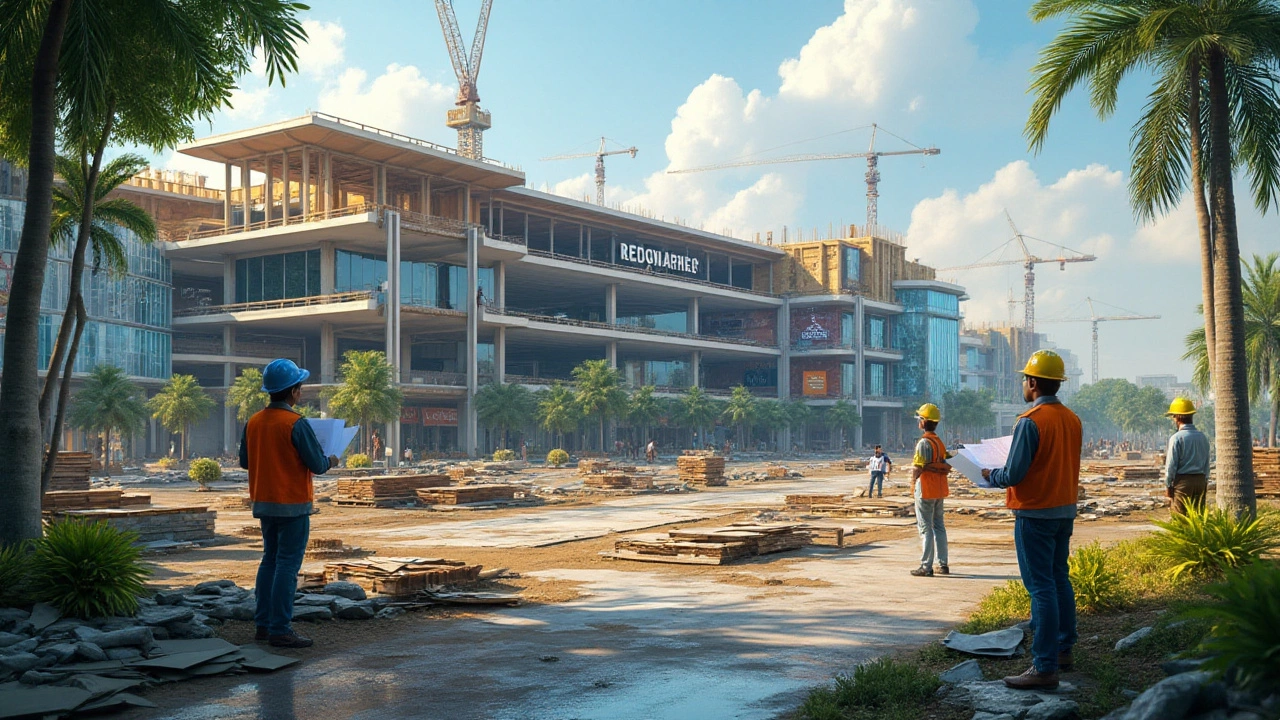
Non-Commercial Construction Overview
When we delve into the realm of construction, it's vital to comprehend the distinctions between various types and their functionalities. In this section, the spotlight is on non-commercial construction, a broad category primarily encompassing projects focused on creating spaces for individuals and communities, rather than businesses. These projects typically involve the development of residential structures such as single-family homes, multi-family residences, condominiums, and sometimes even public sector buildings like schools and hospitals which serve a communal purpose. While commercial construction might aim at maximizing economic potential and operational efficiency, non-commercial construction pivots around creating comfortable and personalized living spaces tailored to individual needs and lifestyles.
Residential construction undoubtedly constitutes the lion's share of non-commercial endeavors. The design process here zeros in on personalization; architects and builders collaborate with homeowners to craft spaces that reflect personal tastes while meeting everyday practical needs. This is not simply about putting a roof over one's head; it involves integrating aesthetics with functionality and ensuring structural safety, energy efficiency, and sustainability. The ever-rising demand for environmentally conscious homes has propelled innovations in using sustainable materials and employing green building techniques.
Public sector construction forms another significant part of non-commercial projects. Such structures, including schools, libraries, and community centers, are constructed with the primary objective of serving the public good. They are funded through governmental budgets or non-profit organizations and are subject to stringent safety and accessibility standards to accommodate diverse populations. In these projects, there's a strong emphasis on longevity and adaptability, with designs often incorporating flexibility to evolve as community needs change over time.
One significant aspect impacting non-commercial construction is regulation. Residential buildings must comply with an array of local building codes, zoning laws, and, in many cases, homeowner association guidelines. Permitting processes can span several phases and require adherence to safety standards and environmental regulations. This intricacy often necessitates a team of legal consultants, project managers, and architects working in harmony to navigate these rules, ensuring every project proceeds smoothly without legal hindrances.
As the famous American architect Frank Lloyd Wright once observed, "The ideal of the complete building —an organic entity— is not reached by the mere fact that the house is standing, nor does it imply conformity to plan."
Interestingly, the non-commercial sector also remains more susceptible to economic fluctuations compared to its commercial counterpart. During economic downturns, individual financial constraints can lead to reductions in new home starts or renovations, while governmental budget cuts might stall public construction initiatives. Yet, it's precisely in times of recovery that non-commercial construction can play a crucial role in revitalizing communities, fostering employment, and boosting local economies. Various statistics reveal that non-commercial projects often act as barometers indicating the economic health of a region. Communities thriving with new residential setups and bustling public projects often mirror a buoyant economy enjoying population growth and increased prosperity.
When it comes to technology, non-commercial construction is increasingly incorporating technological advancements. The use of smart home technology, energy-efficient systems, and advanced insulation techniques represent a forward-thinking approach to future-proof homes. The inevitable rise of smart cities includes non-commercial constructions integrated with networked services, from utility management to home automation systems, underpinning the vision for a connected and efficient habitat.
Conclusively, non-commercial construction is not just about building houses and public structures; it's about crafting environments that nurture, evolve, and sustain. In the shifting dynamics of modern society, these projects anchor communities, offering not just shelter but the essence of settlement and social growth. Understanding the nuances of non-commercial construction provides a well-rounded perspective on its integral role in shaping not only the physical but the cultural landscapes we inhabit.
Key Differences Between Commercial and Non-Commercial Construction
Understanding the distinctions between commercial construction and non-commercial, or residential, construction involves exploring their fundamental characteristics, purposes, and impacts on the environment around us. These two branches of construction serve different needs and require various approaches that greatly influence the final structure's purpose and functionality.
Commercial projects are usually larger in scale and complexity, designed to support business activities. They come with more extensive regulatory requirements and a wider variety of stakeholders. These projects often include making spaces like office buildings, shopping centers, and skyscrapers, where the emphasis on durability and utility is of utmost importance. In contrast, non-commercial construction focuses on personalization, catering to individual needs and tastes, typically involving homes and smaller apartment complexes.
The timelines for these projects also vary significantly. Commercial ventures tend to have tight schedules dictated by business needs, with all parties keen on minimizing downtime and ensuring swift completion. The construction has intricate planning phases involving architects, engineers, and sometimes even public hearings. Meanwhile, residential projects can be more flexible, where individual homeowner choices might prolong the design and building process.
The financial investment required is another distinguishing factor. Commercial projects generally require a larger budget, allowing for advanced technology use, superior materials, and sometimes innovative designs. These investments often translate into higher potential returns due to the commercial nature of the facilities. Residential constructions emphasize costs that cater more to the budget limitations or specific requirements of individual homeowners rather than potential profit or functional expansion.
A renowned construction expert once noted, "The beauty of commercial construction lies in its ability to integrate form and function seamlessly, catering not only to aesthetic desires but also to operational needs."
Additionally, there are notable differences in the legal and regulatory frameworks governing each type. Commercial constructions must adhere to stringent zoning laws, building codes, and safety regulations, often varying by location. These regulations ensure that the completed structures meet community standards, benefit the public, or at least do not detract from the community's character. Residential projects also follow regulations, but they are often more lenient, allowing for greater design flexibility.
Skilled labor dynamics are another area where distinctions arise. Commercial construction demands a more varied skill set, often employing larger crews with diverse expertise. This diversity caters to the project's complex and multifaceted nature. Contrarily, residential construction might see repeated hiring of more specialized, albeit smaller, teams focused on tasks like interior design, landscaping, or other personalized features. Understanding these differences holistically can help when choosing which path to take in your construction endeavors.
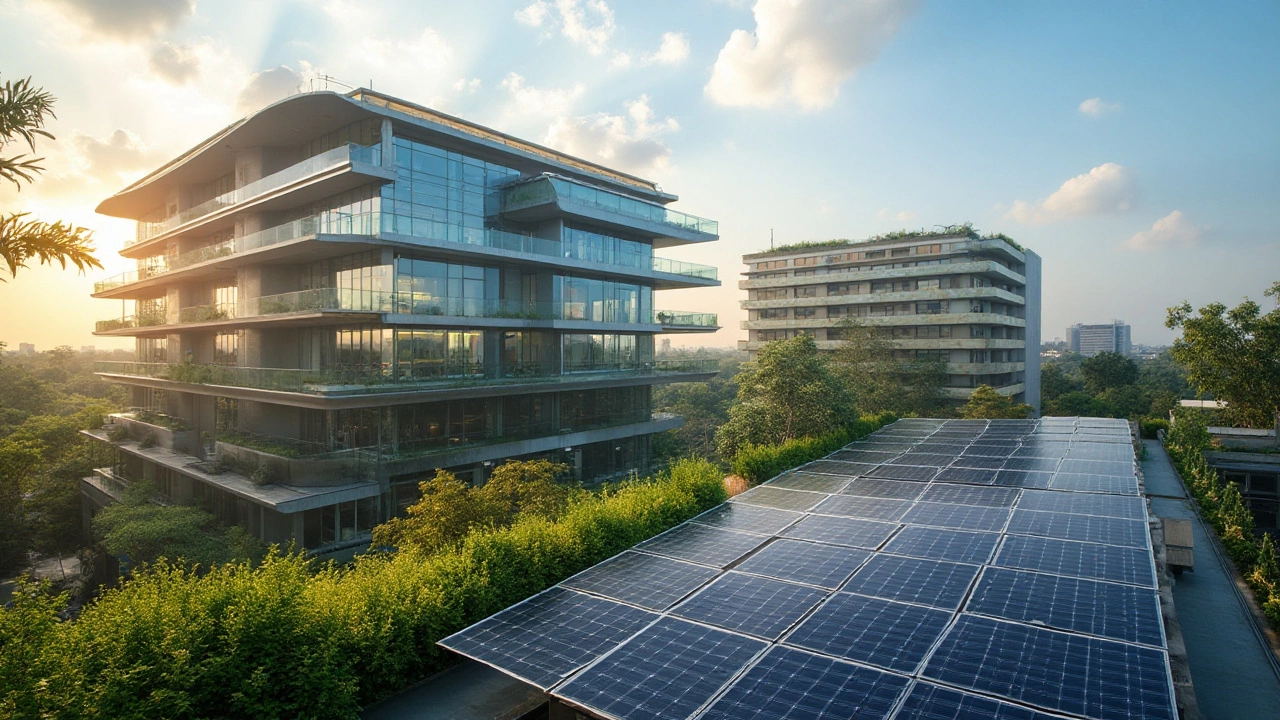
Benefits and Challenges of Commercial Construction
Commercial construction offers numerous advantages that cater specifically to the needs of businesses and industries. One primary benefit lies in the creation of large, versatile spaces that can be adapted to various purposes, such as office buildings, retail spaces, and manufacturing plants. These structures are designed to accommodate a significant number of people and equipment, making them ideal for companies looking to expand their operations or improve efficiency. In addition, the development of commercial properties can stimulate economic growth by introducing new business opportunities and creating job prospects in local communities. Commercial construction projects often involve the use of modern and sustainable building practices, which not only reduces environmental impact but also helps businesses meet regulatory standards and consumer expectations for green practices.
Alongside these benefits, there are notable challenges that stakeholders must navigate in commercial construction. Projects in this sector tend to be extensive and complex, involving numerous stakeholders and requiring significant investment. Managing the interests and input of different parties—such as property owners, developers, construction companies, and regulatory bodies—can be daunting. Timelines are often tight, and any delays or unexpected issues can lead to cost overruns or strained relationships. Additionally, commercial construction must adhere to strict codes and regulations, which while ensuring safety and quality, can also present hurdles in terms of compliance and approval processes. As Richard Foster, a prominent construction economist, once noted,
"The success of commercial construction projects often hinges on the ability to effectively coordinate resources and manage risks at every phase."The scale and complexity of these projects necessitate advanced project management techniques and innovative problem-solving to achieve desired outcomes while staying within budget and on schedule.
Another layer of complexity in commercial construction arises from technological advancements and changing industry standards. Companies are under pressure to incorporate the latest in building technologies and IT infrastructure to ensure future-proof spaces. This includes integrating smart building management systems, which optimize resource usage and enhance security. While the upfront costs associated with these modern technologies can be significant, the long-term savings in operational costs and the appeal to tech-savvy tenants and employees often make them worthwhile investments. Similarly, commercial construction projects are increasingly prioritizing aesthetic considerations alongside functionality, creating environments that are not only efficient but also conducive to employee well-being and customer satisfaction. Commercial construction practitioners must balance these diverse demands, consistently delivering buildings that meet or exceed client expectations while remaining mindful of budgetary constraints.
In summary, the role of commercial construction is pivotal in shaping business landscapes and driving economic progress. By understanding and addressing both the benefits and challenges, stakeholders can maximize the value and impact of their construction endeavors. The integration of sustainability, technology, and community engagement will likely define the future trajectory of commercial construction, making it an exciting field for innovation and growth. As we continue to witness rapid urbanization, the demand for efficient and adaptable commercial spaces is expected to surge, further underscoring the importance of proficiently managing the intricacies inherent in commercial construction.
Tips for Successful Commercial Construction Projects
Embarking on a commercial construction project can be both exciting and daunting given the scale and resources involved. To navigate this journey successfully, careful planning and execution are paramount. One of the key ingredients is having a detailed project plan. This plan should outline the project objectives, the timeline, and the budget, anchoring every decision in clarity and purpose. Incorporating flexibility within your timeline can greatly mitigate the unavoidable delays that often happen. Utilizing project management software can assist in visualizing the entire process, providing real-time updates, and ensuring all stakeholders are aligned. Equally important is assembling a competent team. Hiring skilled contractors and experts who have experience in similar commercial projects ensures that technical challenges are effectively managed. Creating a team dynamic that fosters open communication can prevent misunderstandings and facilitate smoother operations.
A successful commercial construction venture balances visionary ideas with practical constraints. Engaging with architects and engineers early in the process allows their input to shape feasible and innovative designs while staying within budgetary limits. Delving into sustainable practices often not only aligns with ethical commitments but can also lead to energy efficiency and cost savings. Adopting green building techniques and materials can set the project apart, enhancing its long-term value. Moreover, it's crucial to maintain comprehensive documentation. Keeping detailed records of all transactions, communications, and blueprints helps resolve disputes swiftly. Preparing for challenges by conducting a thorough risk assessment can greatly minimize potential pitfalls down the road. Staying informed about building codes and regulations ensures compliance and avoids costly legal entanglements. Additionally, ensuring proper insurance coverage guards against unexpected incidents that can derail the project.
"The greatest threat to success is not discovering your true potential." This insight by renowned entrepreneur Richard Branson highlights the importance of striving for excellence in every aspect of a project, from visual design to structural integrity.
Moreover, the importance of clear communication cannot be overstated. Establishing regular check-ins and updates helps maintain transparency and fosters trust among all parties involved in the project. Effective communication tools, whether through in-person meetings or digital platforms, can help facilitate this process. Emphasize active listening and encourage feedback from your team; often, valuable insights are gained from those on the ground. Consider incorporating technology like Building Information Modeling (BIM) which allows different stakeholders to visualize, evaluate, and coordinate efficiently. Another crucial element in successful commercial construction is stakeholder management. Engage with all relevant stakeholders early on, including community members and governmental entities, to ensure that their needs and concerns are addressed. This proactive approach can smoothen the approval process and foster positive relationships within the community. Developing a strategic marketing plan prior to project completion can also aid in positioning it for a successful launch in the market.
To illustrate the potential impact of integrating these tips into a construction project, consider the following data. According to a study by FMI Corporation, commercial projects implementing project management software saw a 30% reduction in cost overruns. Sustainable practices, according to the U.S. Green Building Council, have been shown to reduce energy consumption by up to 25%, offering long-term savings. These figures underscore the tangible benefits of adopting a meticulous and informed approach to commercial construction.
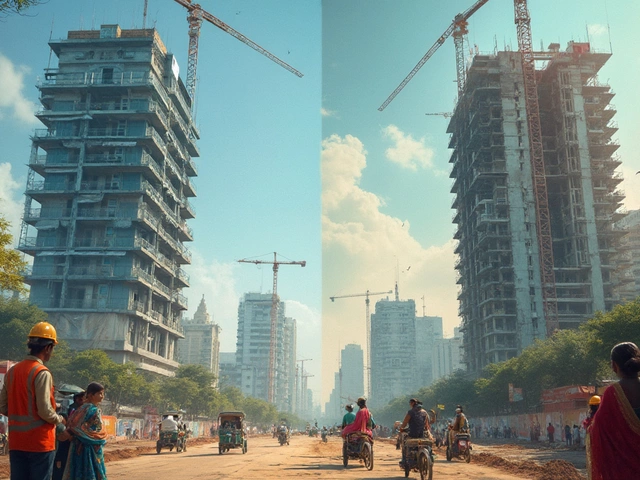
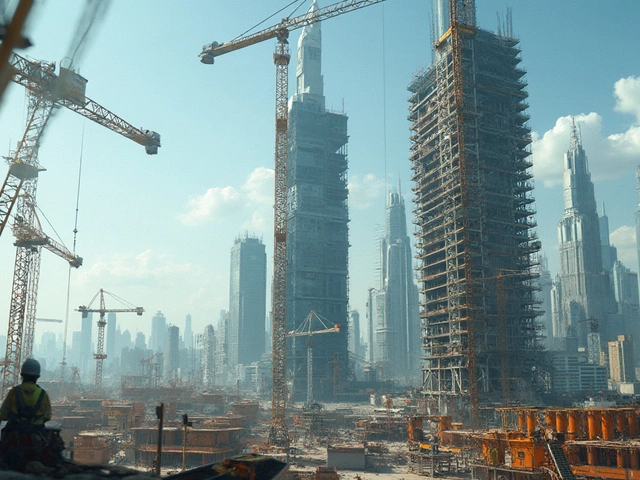
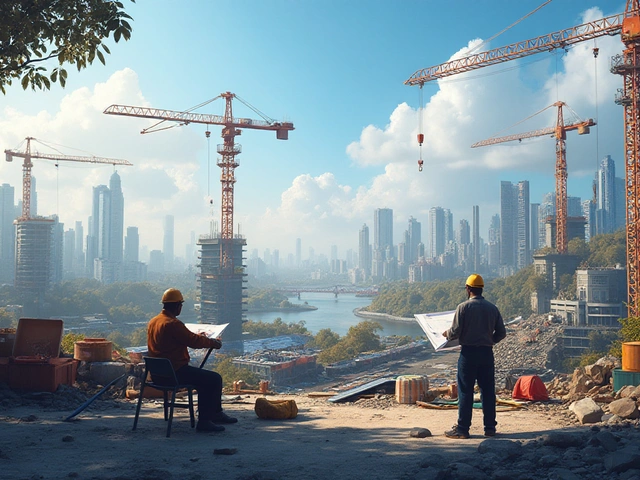
Write a comment